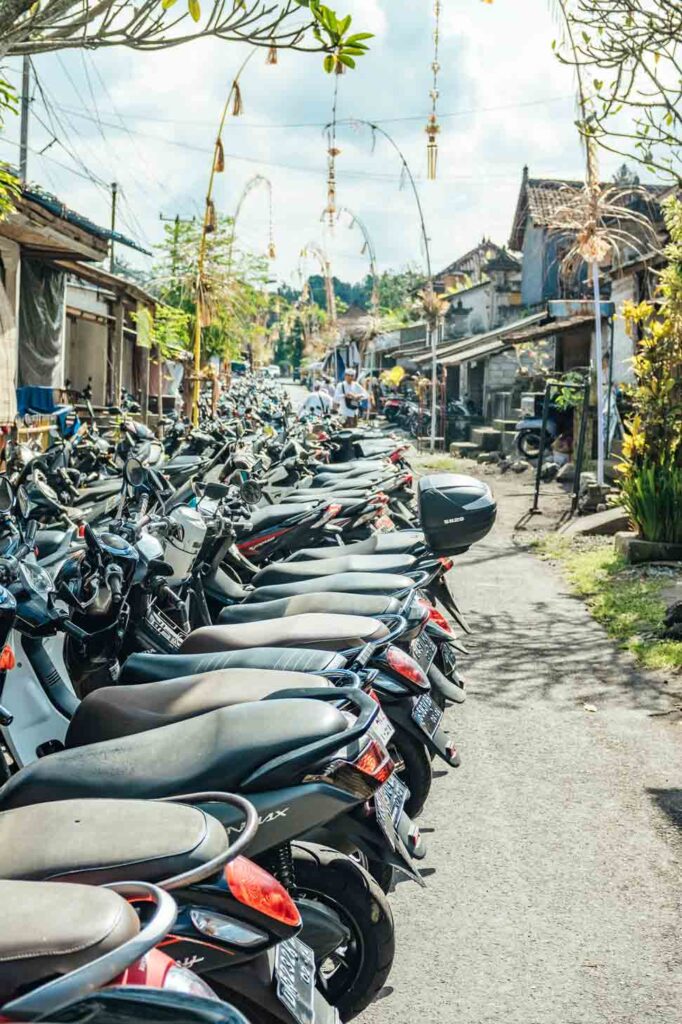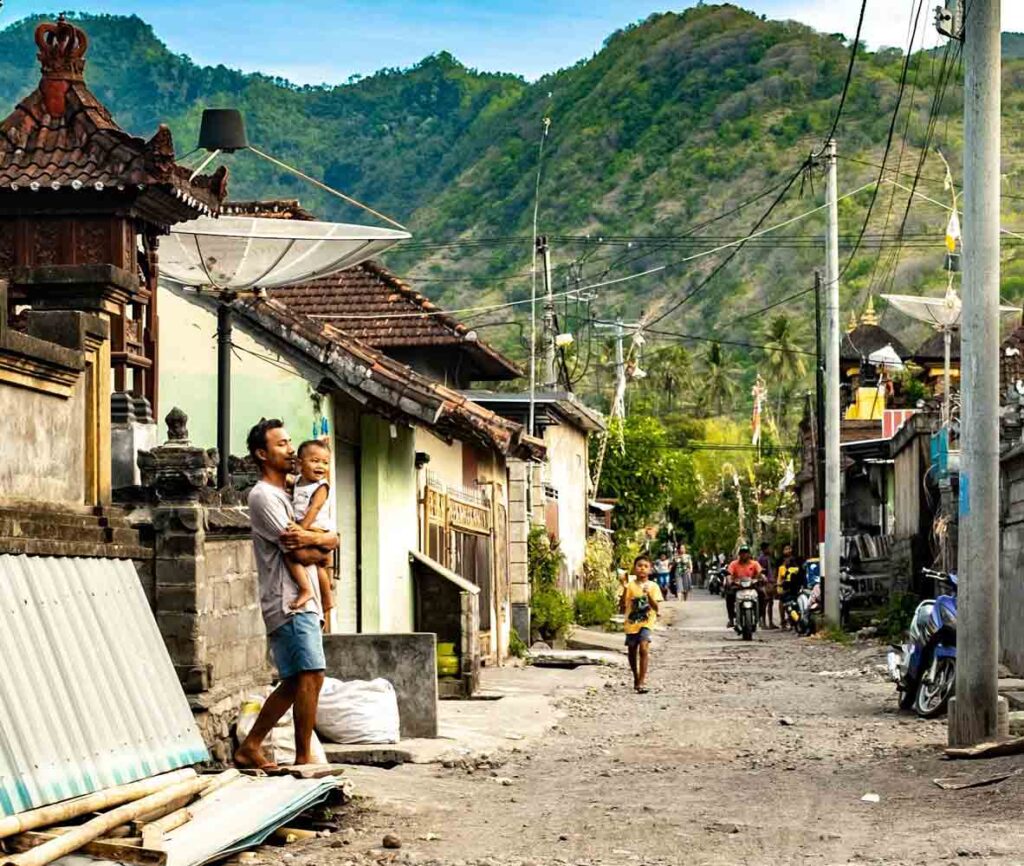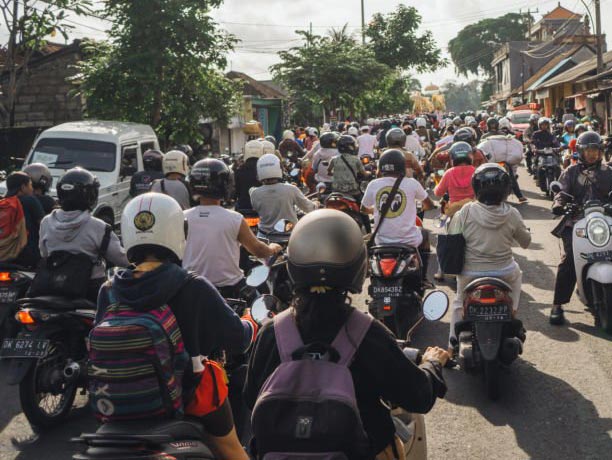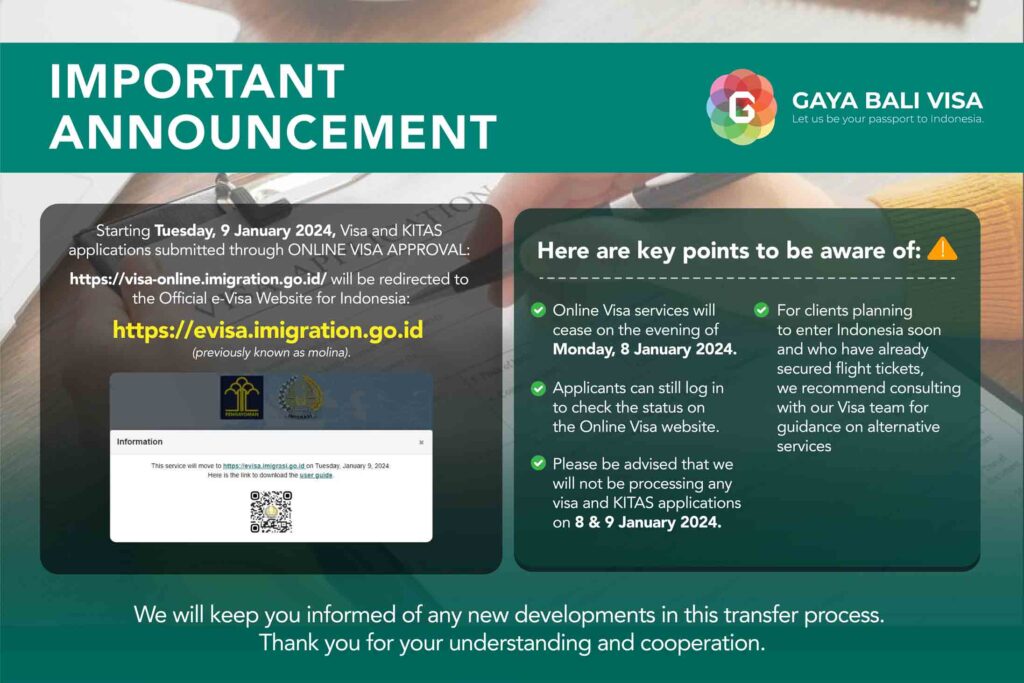Bali driving tips from Gaya Bali Visa
Embark on your Bali adventure with confidence using our practical Bali Bike Driving Tips. Explore the island’s beauty safely with essential biking insights. From traffic etiquette to road conditions, our guide ensures a smooth ride.
Discover the best ways to navigate Bali on two wheels. Dive into our Bali Bike Driving Tips for an unforgettable and secure biking experience.
Let’s go through the point that we consider as most important:
License Requirements in Bali/Indonesia
Before you start your engine and hit the scenic roads of Bali, it’s crucial to ensure you have the right paperworks to legally drive. Here are the license requirements:
- Internation Driving Permit (IDP)
To legally ride a motorcycle in Bali, having an International Driving Permit (IDP) is highly recommended. This document translates your native license into several languages and is widely accepted around the world. You can easily do it in your country before getting to Bali and its duration is 1 or 2 year depending on the issuing country. - Indonesian Driver’s License
Alternatively, you can obtain an Indonesian driver’s license. This may require additional paperwork and a visit to the local licensing office.It’s essential to check the specific requirements for obtaining a local license if you plan on an extended stay.
We can easily help you with that, contact us at @gayabalirent and get your license hassle free today.
- Age Restrictions
Be aware of the age requirements for motorcycle riders in Bali. In Indonesia, the legal age for obtaining a motorcycle license is typically 17, so ensure you meet the minimum age criteria. - Insurance Coverage
Very important to have when you are abroad ands especially with Bali traffic and roads!! The usually said: I will drive slow or it doesn’t happen to me could cost you in the end a lot! Check if your existing travel insurance or a separate motorcycle insurance policy covers riding in Bali.
Having an insurance is crucial in case of accidents or unforeseen events.It is important also that you keep the data of insurance with you so in case of an accident they are easily accessible to show to hospital and paramedics. No hospital will take care of you if they don’t know you have valid insurance or who is going to pay the bills.
Sad but its the true reality and we know several example of that.
So get covered and ride safe!
Always wear a helmet
When it comes to exploring Bali on two wheels, strapping on a helmet isn’t just a rule, it’s your best travel companion. Here’s why helmet usage is so important:
- Safety First
The primary purpose of a helmet is to safeguard your head in case of an accident. Bali’s roads can be unpredictable, with varying terrain (especially sand on the side of the road) and traffic conditions. Wearing a helmet significantly reduces the risk of head injuries, ensuring that you can enjoy your ride without compromising on safety.
- Legal Requirement
In Bali, wearing a helmet is not just a suggestion; it’s the law. Indonesian traffic regulations mandate the use of helmets for both the driver and the passenger. Being caught without a helmet can result in fines, and it’s an unnecessary risk that’s easily avoidable.
PRO TIPS: Considering paying a small amount to the police office to avoid a fine in case you are caught riding without a helmet is considered corruption. We don’t promote that and we suggest you also to not do that to keep the law enforced and fair in Indonesia. - Protection from Elements
Bali’s weather can be unpredictable, especially during the rainy season. A helmet provides not only protection in case of a fall but also shields you from rain, wind, and debris, making your ride more comfortable.
Also it may sounds funny but its reality the beautiful coconut that you see on top of trees and that you drink the energetic water out of them sometimes they fall on the street so its good to stay protected as they are quiet heavy and hard. - Rental Inclusions
When renting a bike, helmets are typically included in the rental package. Ensure that the helmet provided fits you well and looks well maintained.
When renting from a reputable motorbike agency, they will prioritize your safety by providing well-maintained helmets. - Setting an Example
By wearing a helmet, you set a positive example for other riders and contribute to a culture of safety on the roads. It’s a small but impactful step in promoting responsible biking practices.
- Comfort and Focus
A well-fitted helmet enhances your overall riding experience. It reduces wind noise, protects your eyes from dust, and allows you to focus on the breathtaking scenery rather than worrying about safety concerns.

Traffic Rules
Understanding and adhering to traffic rules is essential for a smooth and safe biking experience in Bali. Let’s dive deeper into the key aspects of navigating Bali’s roads:
- Left-Hand Traffic
In Bali, and in Indonesia, traffic flows on the left side of the road. Drive on the left lane to ensure a smooth flow of traffic and minimize the risk of collisions. - Follow Traffic Signals
Respect traffic signals and obey traffic lights. Green means go, red means stop, and yellow indicates caution. Bali’s intersections can be busy, so following these signals is crucial for maintaining order on the roads. - Overtake with Caution
If you need to overtake another vehicle, do so with caution. Be aware of oncoming traffic and make sure there is sufficient space to pass safely. Avoid overtaking on blind curves or congested areas. - Use of Headlights
In Bali, it’s common for drivers to use headlights not only at night but also during the day. This is a safety practice to enhance visibility, especially on roads with heavy traffic. - Respect Pedestrians
Pedestrians have the right of way at designated crossings. Slow down and be prepared to stop when you see pedestrians approaching or crossing the road. Exercise patience and courtesy. - No Mobile Phones
Using a mobile phone while riding a bike is not only dangerous but also against the law. Pull over to a safe spot if you need to make a call or use your phone. Distracted driving can lead to accidents. - Lane Discipline
Stick to your lane and avoid weaving in and out of traffic unnecessarily. Maintaining lane discipline helps prevent collisions and ensures a smoother flow of traffic. - Horns and Signals
Use your horn and turn signals to communicate with other road users. A quick beep can serve as a warning, and using signals helps indicate your intentions to other drivers. - Roundabouts
Approach roundabouts with caution. Give way to vehicles already in the roundabout and only enter when it’s safe to do so. Follow the directional flow of the roundabout. - No Alcohol
Riding under the influence of alcohol is strictly prohibited. The legal blood alcohol limit for drivers in Bali is very low, and violating this rule can result in severe penalties.
By understanding and respecting these traffic rules, you not only ensure your safety but also contribute to a harmonious and orderly flow of traffic on Bali’s roads. Safe travels!
Local Etiquette
Embracing local etiquette is key to having a positive and respectful experience while biking in Bali. Let’s explore the cultural norms that contribute to a harmonious interaction with the local community:
- Balinese Greetings
Begin your interactions with friendly greetings. A smile and a nod can go a long way in establishing a positive connection with locals.
- Respect for Temples
Bali is home to numerous temples, and it’s essential to show respect when passing by these sacred sites. Dress modestly, and if you’re not participating in a ceremony, maintain a respectful distance.
- Clothing Etiquette
Dress modestly when off the beach or outside tourist areas. Balinese culture values modesty, and wearing appropriate clothing shows respect for local customs. When visiting temples, wearing a sarong and sash is often required.
- Balinese Offerings
You may encounter small offerings called “canang sari” placed on the ground throughout Bali. Steer clear of stepping on them, as these are offerings to gods. It’s a small but meaningful gesture to show respect.
- Politeness in Communication
Use polite language and gestures when communicating with locals. The Balinese appreciate visitors who are courteous and considerate. A simple “thank you” or “terima kasih” (thank you in Bahasa Indonesia) can go a long way.
- Respect for Elders
Balinese culture places high value on respect for elders. When interacting with older individuals, use polite language and gestures as a sign of deference.
- Ceremonies and Festivals
Bali is known for its vibrant ceremonies and festivals. If you come across a religious procession or ceremony, maintain a respectful distance and observe quietly without disrupting the proceedings.
- Environmental Consciousness
Bali places a strong emphasis on environmental conservation. Avoid littering and be mindful of the impact your actions may have on the environment. Participate in eco-friendly practices whenever possible.
- Tipping Customs
While tipping is not mandatory, it is appreciated. In tourist areas, a service charge may be included, but a small additional tip for good service is customary.
By embracing and respecting local etiquette, you not only enhance your own experience but also contribute positively to the communities you encounter during your Bali biking adventure. Enjoy the cultural richness Bali has to offer!

Parking
Here’s what you need to know about parking in Bali:
- Designated Parking Areas
Bali, especially in popular tourist spots, has designated parking areas for bikes. Look for these marked spaces, often managed by local attendants who may ask for a small parking fee.
Using these spaces not only ensures the safety of your bike but also helps maintain order on busy streets. - Street Parking
In some areas, especially less congested ones, you may find street parking for bikes. However, be mindful of local regulations and avoid obstructing pedestrian pathways or other vehicles. It’s essential to park responsibly to prevent traffic congestion and ensure a smooth flow of vehicles. - Paid Parking
In certain high-traffic zones, you might encounter paid parking facilities. While it might seem like an inconvenience, these services often contribute to local maintenance efforts and ensure the security of your bike.
Consider it a small investment for peace of mind. - Residential Areas
If you’re exploring residential neighborhoods, be respectful of local residents’ space. Avoid parking in front of private properties unless you have explicit permission. This courteous approach fosters positive relations between tourists and the local community. - Tourist Attractions
When visiting popular tourist attractions, follow the designated parking guidelines. These spots often have well-organized parking facilities, and adhering to the rules helps maintain a smooth experience for everyone. - Environmental Considerations
Ensure that your parking choice doesn’t harm the environment. Avoid parking in sensitive natural areas or on beaches where it may disturb ecosystems. Embrace eco-friendly practices to contribute to Bali’s sustainability efforts.
By parking responsibly, you not only safeguard your bike but also contribute to a harmonious and respectful travel experience for yourself and fellow explorers in Bali. Remember, a little consideration goes a long way in maintaining the beauty and integrity of this tropical paradise.
Weather Conditions
Understanding and adapting to the weather conditions in Bali is crucial for a safe and enjoyable biking experience. Let’s explore this aspect in more detail:
- Tropical Climate
There are basically two distinct seasons in Bali: the dry season (April to October) and the wet season (November to March). Be prepared for warm temperatures throughout the year, with the wet season bringing higher humidity levels. - Rainy Season Challenges
During the wet season, sudden and heavy rainfall is common. This can result in slippery road conditions and reduced visibility. It’s advisable to check the weather forecast before embarking on your journey, especially during these months, and to pack rain gear such as a waterproof jacket or rain coat.
PRO TIP: you can find many type of rain coat both in local stores and in dedicated helmet shops around the road. So you don’t have to buy it from home. - Sun Protection
The sun can be intense in Bali, even during the wet season. Protect yourself from sunburn by wearing sunscreen, sunglasses, and appropriate clothing. Staying hydrated is also essential, so carry a water bottle with you. - Road Safety in Rain
Rain can make road surfaces slippery, so exercise caution when riding. Reduce your speed, increase your following distance, and be aware of potential hazards.
Bali’s roads may not be equipped with the same drainage systems as in more developed areas, so puddles and flooding can occur. - Temperature Changes
While daytime temperatures are generally warm, evenings can be cooler, especially in the central highland areas like Ubud. Pack a light jacket or long sleeves for evening rides to stay comfortable. - Adaptability is Key
Bali’s weather can be unpredictable, and conditions may vary across different regions of the island. Being flexible in your plans and adaptable to changing weather patterns will enhance your overall experience. - Check Local Advice
Before setting out, inquire with locals or your accommodation about the current weather conditions and any specific considerations for the areas you plan to visit. Their insights can be valuable in planning a safe and enjoyable ride.
By being aware of and prepared for the weather conditions in Bali, you’ll ensure a smoother biking experience, allowing you to focus on the stunning landscapes and cultural richness that this tropical paradise has to offer.

Road Conditions
Navigating Bali’s diverse road conditions requires a keen awareness and adaptability to ensure a safe and enjoyable biking experience. Let’s delve into the details of road conditions on the island:
- Varied Surfaces
Bali’s roads offer a mix of surfaces, ranging from well-paved highways to narrower, uneven paths in rural areas. When planning your route, be prepared for the diversity in road conditions and adjust your speed accordingly. - Urban Congestion
Popular tourist areas such as Kuta,Seminyak, Canggu can experience heavy traffic congestion, especially during peak hours. Drive carefully through crowded streets don’t lose patient and respect the other drivers- vehicles. - Rural Roads
Venturing into the heart of Bali often means traversing narrow roads surrounded by lush landscapes. These roads may lack asphalt, so exercise caution, especially around turns and curves. - Potholes and Bumps
Be on the lookout for potholes and bumps, which can be common, particularly on less-traveled roads. Keep a safe distance from other vehicles to allow time to react to road irregularities. - Mountainous Terrain
Bali’s central region features mountainous terrain, leading to winding roads with steep ascents and descents. Take extra care when navigating these areas, maintaining a controlled speed and being mindful of blind curves. - Animals on the Road
Bali is home to a variety of wildlife, and it’s not uncommon to encounter animals such as dogs, chickens, or even monkeys on the roads. Slow down and give these creatures ample space to avoid accidents. - Construction Zones
Bali’s infrastructure is continually evolving, and you may encounter road construction or maintenance zones. Proceed with caution, adhere to any posted signs or instructions, and be prepared for temporary changes in road conditions. - Traffic Rules and Signs
Familiarize yourself with local traffic rules and signage. Understanding and following the rules will contribute to a safer and more organized road environment. - Night Riding Caution
If you plan to ride at night, be aware that some roads may have limited lighting. Exercise extra caution, ensure your headlights are functioning correctly, and consider avoiding unfamiliar routes in the dark. - Local Driving Style
Balinese drivers may have a different approach to traffic rules, and road etiquette can vary. Stay alert, anticipate the movements of other road users, and adapt to the local driving style.
By being aware of the diverse road conditions in Bali and approaching your bike adventure with adaptability and caution, you’ll enhance your overall experience while exploring the rich tapestry of this captivating island.
Traffic Congestion
Navigating the vibrant streets of Bali often involves encountering various levels of traffic congestion, especially in popular tourist hubs. Let’s delve into the details of dealing with traffic congestion on the island:
- Scooter-Friendly Lanes
Despite traffic, scooters and motorcycles can often navigate through tight spaces, allowing you to weave through congestion more efficiently than larger vehicles. However, exercise caution and be aware of pedestrians and other vehicles. - Alternate Routes
Familiarize yourself with alternative routes to avoid the busiest roads. Local knowledge or navigation apps can help you discover less congested paths, providing a smoother and more enjoyable ride. - Explore Off-Peak Hours
Consider exploring attractions during off-peak hours. Many tourist spots are less crowded early in the morning or later in the evening, providing a more relaxed experience. - Adapt to the Flow
Traffic in Bali has its own unique flow. Instead of trying to fight it, adapt to the rhythm. Embrace the slower pace, enjoy the surroundings, and view the journey as part of the adventure.
By being mindful of traffic patterns, adopting a patient and adaptive mindset, and exploring strategic alternatives, you can navigate Bali’s traffic congestion more smoothly, making the most of your time on the road.

Fuel Stations
Ensuring a smooth ride in Bali involves being mindful of fuel stations, especially if you’re exploring the more remote or less developed areas of the island. Let’s explore the details of dealing with fuel stations in Bali:
- Availability
Bali is equipped with a network of fuel stations that are generally well-distributed in urban and popular tourist areas. However, in more remote regions, the availability of fuel stations may be limited. - Fuel Types
Most fuel stations in Bali offer both gasoline (petrol) and diesel options. Ensure that you know the fuel type your bike requires and choose the appropriate pump. - Cash Payment
While many fuel stations accept credit cards, it’s advisable to carry some cash, especially in more secluded areas where card facilities may not be available. - Fuel Quality
Generally, the quality of fuel in Bali is reliable. Stick to reputable fuel stations to ensure you’re getting clean and good-quality fuel for your bike. - Fuel Stations in Rural Areas
If you’re exploring rural or less-developed areas, plan your fuel stops strategically. Some areas may have limited or no fuel stations, so fill up your tank when you have the opportunity. - Gas Stations vs. Roadside Vendors
While gas stations are the most reliable source of fuel, especially for longer journeys, in some areas, you may come across roadside vendors selling fuel in bottles. Exercise caution with these options, as the quality may not be consistent. - 24-Hour Stations
Some fuel stations operate 24 hours, particularly in busier areas. This can be beneficial if you’re on a late-night or early-morning journey. - Ask Locals
If unsure about the nearest fuel station or their operating hours, don’t hesitate to ask locals for guidance. They can provide valuable insights and ensure you’re well-prepared for your journey.
By staying mindful of fuel station considerations and planning ahead, you’ll be well-equipped to enjoy your bike adventure in Bali without worrying about running out of fuel in less-traveled areas.
Conclusion for Bike Driving Tips in Bali
As we finish up our Bali Bike Driving Tips journey, we hope that our tips are useful for your exploring this island paradise on two wheels. Your Bali adventure is a story waiting to be written, and we can’t wait to hear your chapters!
Share below about your own riding wisdom, favorite spots, or ask questions in the comments below – let’s create a community of road explorers.





